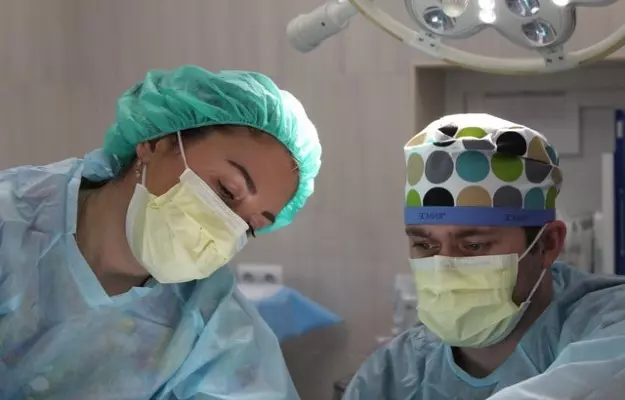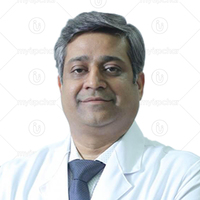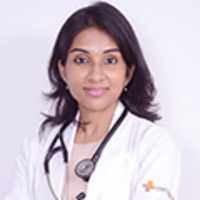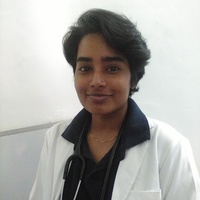We began working with COVID-positive patients about three months ago. It has been tough but also educational. We are learning new things about this virus every day. SARS-CoV-2 is a totally novel strain in its behaviour, and its pattern of spread was not known to anyone in the world, which allowed it to stealthily spread its foothold over the world.
Three months ago, things were very different, in the sense that the cases were limited and so was our experience to handle patients suffering from COVID-19. However, the number of cases has increased dramatically since then and as was anticipated, there is now a severe resource and manpower shortage. We have moved from 6-hour shifts to 8-10 hours shifts (while wearing PPE kits). Only those doctors are assigned to the COVID-19 ward who are below the age of 50 and do not have any co-morbidities. We ensure that doctors in their late-40s do not have to do long shifts.
The crisis that this pandemic has brought home to our doorsteps has been hitherto unknown. This unprecedented situation has led to a dramatically altered definition of the word ‘warrior’. Society has always revered and deified doctors as saviors of the fragile human life, but to be touted as a frontline warrior or the first line of defense in this war is something entirely different.
To be fair, it does feel like we’re heading into a battle to fight for our country every time we head for duty, what with hospitals acting as the battlefield and our equipment as weapons. We know we will not have access to food, water, or the washroom for considerable amounts of time when we head to the COVID ward. Therefore, we hydrate ourselves adequately, eat well and use the washroom beforehand only. There are no breaks in between. After an exhausting 8-hour shift, the healthcare professional needs a minimum of 8-10 hours of rest. After duty in a COVID ward for a week, the person has to go for 7 days quarantine (which is also one of the cardinal reasons behind staff shortage).
When going into a COVID duty, the most important thing is to wear the protective gear in the correct manner. N95 masks, face shields, gloves and the donning and doffing of the PPE kit are key in ensuring that healthcare workers do not get infected. Initially there were some challenges with the donning and doffing process which is why a lot of frontline workers were exposed to the virus and tested positive. However, now after three months of practice, this is a lesser issue. It is just one of the many new things we have gotten used to. After doffing the PPE kit, we need to ensure that we scrub our hands and have a proper bath. Those serving in the COVID ward need to ensure they are having proper nutrition and that they are boosting their immunity by taking in multi-vitamins.
I was going into the Operation Theatre to perform a surgery, when I wore the PPE kit for the first time. On top of the PPE kit I had to wear the surgical gown and gloves. I spent the first fifteen minutes of the surgery wondering how I was going to perform with so many layers of gloves, a face shield, and a mask. It was initially difficult to peer into the microscope. However, within half an hour I had settled in and was comfortable. The trickiest part is ‘doffing’. Once the surgery is completed, you go to the doffing area where you take off the PPE kit. It is almost like a dance, where you first unzip the kit, then you dispose of the first set of gloves. Then you remove your head piece and wiggle out of the kit one leg at a time. Under no circumstances are you to touch the outside of the kit. It's like a dance but it is very important because it prevents the virus from infecting you.
Patient population is divided into different categories. The segregation allows us to manage and monitor the patients effectively. Some are very sick and are on ventilators, some show moderate symptoms and require oxygen support only while others show mild symptoms only. For those with mild symptoms, video consultations are organized. One nurse can attend to nearly six patients exhibiting mild symptoms. Those who are exhibiting moderate symptoms and require oxygen support one nurse can monitor around 3 patients. The patients who are on ventilator require check ups throughout the day and are assigned one nurse for every patient. These patients usually fall in the ‘severe’ category.
One of the things which has really helped protect the frontline workers during this time is the IT innovation. We can now connect with patients and monitor them via video calls. Apart from that we have all the protective equipment and we use respirators which provide us with 100 percent safety against the virus. When procedures are being done such as putting in an IV line or intubating a patient so that he can be put onto the ventilator, there is a higher risk of being exposed to the virus via aerosols. Therefore, we have to take the special protective measure of installing a glass/plastic cabinet covering the whole body through which we put our hands and conduct the procedure. It also allows us to maintain a safe distance from the patient.
Overall, dealing with the Covid-19 patients has been an experience I will never forget. Although I’ve encountered death several times in critical care wards, nothing can be compared to the psychological stress of working in a COVID ward. Most coronavirus patients are kept in isolation, which means, if they become critically ill, doctors and nurses are the only people they see in their final hours. The procedure is physically exhausting, mentally tiring and also emotionally draining. But watching this plague unfold right before my eyes has also been spiritually liberating: it made me realize that this zoonotic disease is just Mother Nature paying us back in the same coin with which she has accepted credit for far too long. It was not a question of ‘if’, but simply a matter of ‘when’.
I feel like everyone in my team is learning and while the initial two weeks were very tough, we have all settled into the rhythm now. There is still a lot left to do and we shall keep at it as long as required.
***
-
Name: Dr Dinesh Kumar Mittal, HOD & Director, CTVS
-
Phone Number: 9818434656
-
Medical Degrees and Specialization: MCh(CTVS)AIIMS
-
Years of Experience: 15 Yrs





















